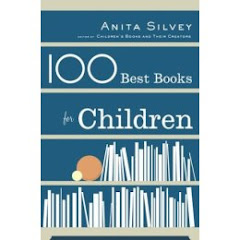
MOUSE MATCH: A CHINESE FOLKTALE by Ed Young
Book Review: Traditional Literature
MOUSE MATCH: A CHINESE FOLKTALE by Ed Young
Bibliography
Young, Ed. 1997. MOUSE MATCH: A CHINESE FOLKTALE. Harcourt Brace & Company. Singapore. ISBN 0152014535
Plot Summary
The mouse parents of a beloved mouse daughter are searching for the greatest and most powerful suitor for her. The much flattered sun politely refuses for it can be blocked by a cloud. The cloud can be scattered by the wind; the wind can be stopped by the mountain; the mountain can slowly be crumbled by mice. When the mouse daughter becomes a bride, the mouse family learns that to find an answer they had not only to look- but also to see.
Critical Analysis
This story is a variant of the MOUSE BRIDE, an ancient Chinese tale. In this story, the moral lesson of finding value in what is already familiar is taught. Diversity is recognized in this folktale by the openness of the mouse parents to their mouse daughter in regards to her marrying an animal of another race. This is portrayed by the silhouettes of a various suitors that meet the mouse parents. The story is constructed as an accordion book that opens into an 18-foot mural. Brown hues are used in a collage with pastel and watercolor illustrations. On the reverse side on this mural one will find striking white Chinese calligraphy on a black background.
Review Excerpts
“Young presents a Chinese variant of the "Mouse Bride" tale to demonstrate the importance of recognizing the value of what is in one's own backyard”. From School Library Journal
“It's a polished, effective presentation, for lap-sharing or story hours, and evidence that Young continuously redefines his role as a picture-book creator”. From Kirkus Reviews
Connections
Book Review: Traditional Literature
MOUSE MATCH: A CHINESE FOLKTALE by Ed Young
Bibliography
Young, Ed. 1997. MOUSE MATCH: A CHINESE FOLKTALE. Harcourt Brace & Company. Singapore. ISBN 0152014535
Plot Summary
The mouse parents of a beloved mouse daughter are searching for the greatest and most powerful suitor for her. The much flattered sun politely refuses for it can be blocked by a cloud. The cloud can be scattered by the wind; the wind can be stopped by the mountain; the mountain can slowly be crumbled by mice. When the mouse daughter becomes a bride, the mouse family learns that to find an answer they had not only to look- but also to see.
Critical Analysis
This story is a variant of the MOUSE BRIDE, an ancient Chinese tale. In this story, the moral lesson of finding value in what is already familiar is taught. Diversity is recognized in this folktale by the openness of the mouse parents to their mouse daughter in regards to her marrying an animal of another race. This is portrayed by the silhouettes of a various suitors that meet the mouse parents. The story is constructed as an accordion book that opens into an 18-foot mural. Brown hues are used in a collage with pastel and watercolor illustrations. On the reverse side on this mural one will find striking white Chinese calligraphy on a black background.
Review Excerpts
“Young presents a Chinese variant of the "Mouse Bride" tale to demonstrate the importance of recognizing the value of what is in one's own backyard”. From School Library Journal
“It's a polished, effective presentation, for lap-sharing or story hours, and evidence that Young continuously redefines his role as a picture-book creator”. From Kirkus Reviews
Connections
1. This story lends itself to dramatic play by the use of silhouette stick characters to retell the story while a narrator reads the book. Students may act out the roles of the sun, clouds, wind and mountain.
2. Compiling moral lessons learned from this story and other Chinese folktales by Ed Young could be copied and illustrated by children to keep in their private collections. The students can also discuss these moral lessons in class and correlate to issues in their lives.
*Other Chinese folktales by Ed Young
Young, Ed and Tracey Adams. THE LOST HORSE: A CHINESE FOLKTALE. ISBN 015205023X
Young, Ed. TERRIBLE NUNG GWAMA: A CHINESE FOLKTALE. ISBN 0529054442
Photo courtesy of www.amazon.com



